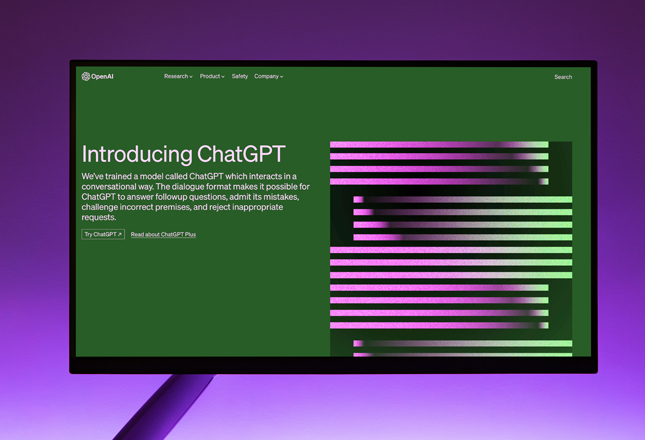
We are all familiar with Chat GPT platform and new Generative AI tools, that create new content that resembles human-generated content. This technology learns from existing datasets to generate, new unseen output that shares properties with the input data.
But how can we use this in Real Estate?
AI is commonly used to process data, for example from IoT sensors, or from real estate transaction, for advanced analytics or smart building solutions, climate risk, property & tenant management applications. AI is also seen in construction solutions spanning from robotics, remote sensing, IoT to computer vision.
But how can we use the Generative AI?
We have come across startups using this technology in Real Estate Transactions (buying and selling or residential and commercial real estate) and AEC Software (architecture, engineering, developer software). Some the the applications are: custom renders for architectural, concept design models, text to 3D model or building, information model (BIM), architectural floor plan generation & optimisation, 3D urban reconstruction, offsite construction takeoff & cost estimation.
For background Generative AI consists of:
GANs (Generative Adversarial Networks): A type of generative model consisting of two neural networks, the generator and the discriminator, which are trained simultaneously. The generator creates data resembling the input data, while the discriminator evaluates its authenticity. Through this competition, GANs can generate highly realistic data.
Autoencoders: A type of neural network used for unsupervised learning of efficient data codings. They work by compressing input into a latent-space representation and then reconstructing the output from this representation. Autoencoders are used for tasks like dimensionality reduction, feature learning, and more.
Transformers: A deep learning model architecture primarily used for handling sequential data, such as natural language processing (NLP) tasks. Transformers rely on self-attention mechanisms to weigh the significance of different parts of the input data differently. This model has been foundational in developing models that understand context and generate human-like text.
But what other applications can we do and explore?
Recently we have created a POC for generative ESG disclosures.
In the rapidly evolving landscape of environmental, social, and governance (ESG) reporting, the Task Force on Climate-related Financial Disclosures (TCFD) has emerged as a crucial framework for companies seeking to disclose climate-related financial risks and opportunities. However, the complexity and data-intensive nature of TCFD reporting pose significant challenges for many organisations. Generative AI promises to redefine the process of ESG disclosures.
A Pioneering POC: Leveraging Gen AI for TCFD Reporting
Our company (Retransform) recently embarked on a proof of concept (POC) that leverages generative AI to streamline the TCFD reporting process. By integrating TCFD instructions, case studies, examples, and our own company data, our innovative platform is designed to auto-generate preliminary TCFD disclosures. These auto-generated reports provide a solid foundation, which users can then refine and tweak to ensure accuracy and compliance.
How It Works:
Data Integration: At the heart of our solution is the seamless integration of comprehensive ESG data, including Scope 1, 2, and 3 emissions data, directly from our company’s repositories. This ensures that the disclosures generated are not only relevant but also precisely tailored to our company’s environmental impact.
Generative AI at Play: Utilising generative AI, the platform analyses the TCFD framework’s requirements against the backdrop of our integrated data and existing case studies. It then crafts responses that highlight our company’s climate-related financial risk assessments and the strategies in place to mitigate these risks.
User Customisation: Recognizing the uniqueness of each company’s ESG journey, the platform allows for significant user customisation. Stakeholders can adjust the auto-generated content to reflect the most current and accurate representation of their company’s climate strategies and outcomes.
Advantages of Using Generative AI for TCFD Reporting:
Efficiency and Time-Saving: The automation of the initial drafting process drastically reduces the time and resources typically required for TCFD reporting.
Data-Driven Accuracy: With direct access to company-specific ESG data, the disclosures generated are inherently accurate and reflective of the company’s actual climate impact and initiatives.
Customisability and Relevance: The ability for users to tweak and customise the reports ensures that the final disclosures are not only accurate but also closely aligned with the company’s strategic messaging on climate action.
The intersection of generative AI and ESG reporting, as demonstrated by our TCFD reporting POC, marks a significant leap forward in the way companies approach climate-related disclosures. By harnessing the power of AI to process vast datasets and generate nuanced, tailored reports, we are not only streamlining the reporting process but also enhancing the quality and accuracy of the disclosures themselves. As we continue to refine and expand our platform, we remain committed to supporting businesses in their journey towards transparent, impactful climate reporting.
This content has been created with the help of GPT
The following article was authored by Anamaria, Head of Products at Retransform, and was originally published on Medium.com.









